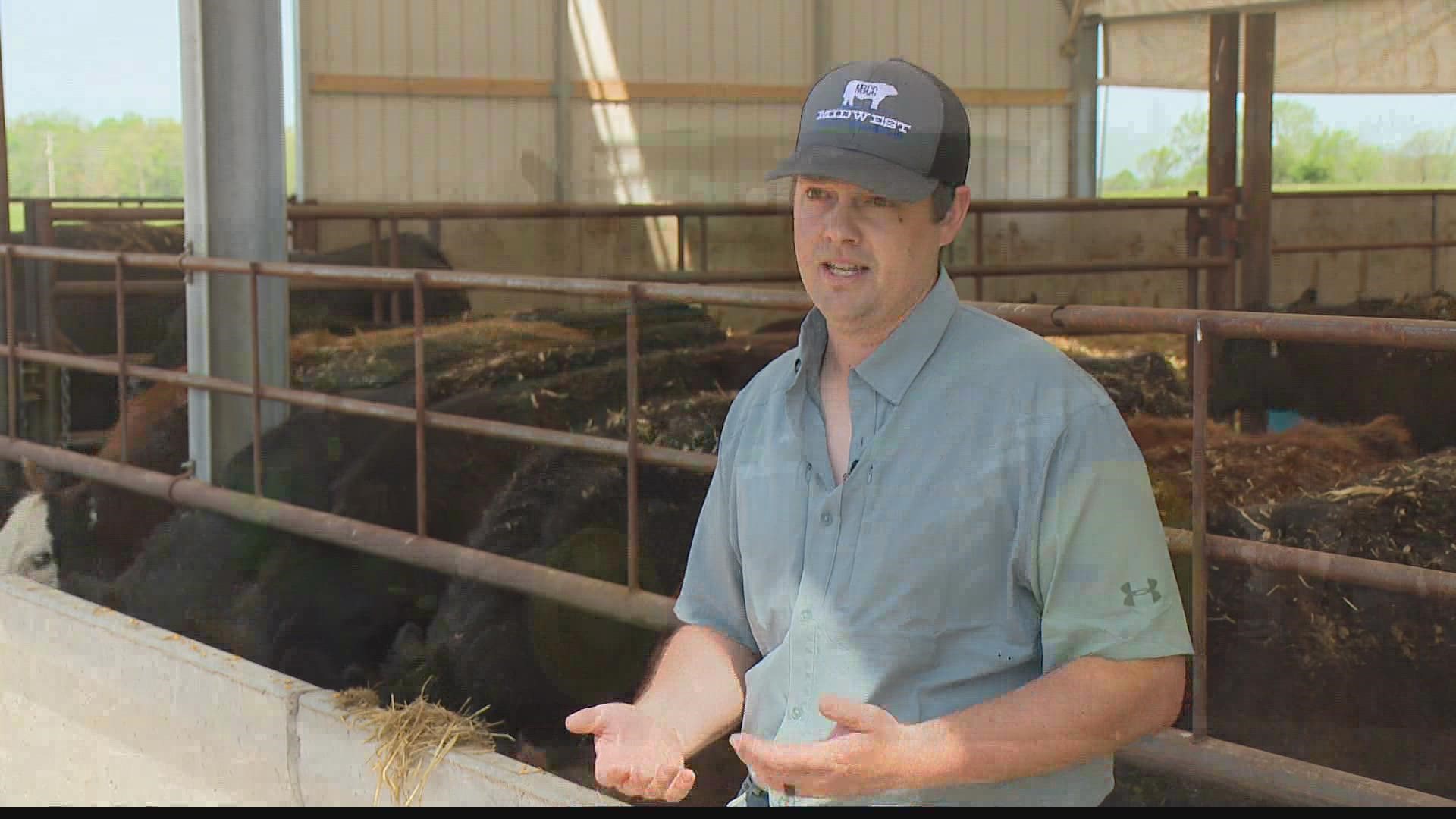HANCOCK COUNTY, Ind. — The United States reports food prices have jumped 10% in the last year, the highest increase since the 1980s. Indiana farmers say the war in Ukraine is just one of many events that has lead to higher input costs, which, in turn, means food is more expensive for families.
Farmer Chris Muegge of M5 Family Farms in Hancock County started planting this month and said it costs more to tend to his crops and raise his cattle. As a result, he warns families food prices likely won’t fall any time soon.
“We’re off today’s fertilizer prices, we’re off today’s fuel prices all of those are up by at least 50%, if not 75%,” Muegge said. “So, this crop that we’re putting in the ground today to harvest this fall is really going to be affected by this. And we started to see all of these input costs really start to creep up a year ago, but they really went into overdrive when this conflict happened.”
Input costs for farming have gone up for about a year now. Those costs are everything the farmer must pay for to make sure he has a good crop and raises healthy livestock. Muegge said his fuel, labor, bedding, and feed prices are up. He also is having trouble getting some vaccines for his cattle.
“We can’t get (it),” Muegge said. “Not because we don’t have the vaccine, because the plastic bottle it goes in is shorted.”
The war in Ukraine resulted in rising grain prices. Muegge said the rise in price for commodities like grain, corn and soybeans works in his favor to a point. He can sell last year’s crop of soybean and corn and break even. But it also backfires, because all those other inputs cost more, including fertilizer.
“We did get a lot of fertilizer out of Russia, and those have stopped,” said Andy Tauer, executive director of public policy for the Indiana Farm Bureau.
Tauer and Muegge agree Ukraine is just the latest issue to impact Indiana farmers.
In 2019, a major packing plant fire foiled the cattle industry, then COVID came, followed by the recent worldwide supply chain slowdown. All those events, as well as natural disasters like hurricanes, affect Indiana farmers.
Muegge called those issues "pin pricks" that were already bleeding many farm operations. The war in Ukraine, he said, was a “shotgun blast” to farm operations.
“So it’s not just one single thing,” Muegge said. “It’s all these things that have come, and what I would call once in a decade, once in a lifetime, event that have taken place now, three, four years in a row.”
They estimate farmers will be dealing with the err of all of these national and world events for months and years to come.
"We'll get through 2022,” Tauer said, “but 2023 is already setting up to be a challenge as well.”
The next worry for farmers is how will this influence the future of local farms. Muegge’s biggest fear is not having enough to pass down to the next generation.

